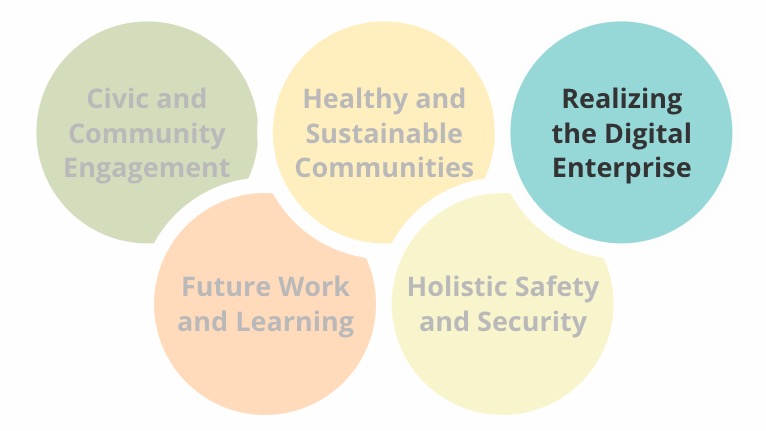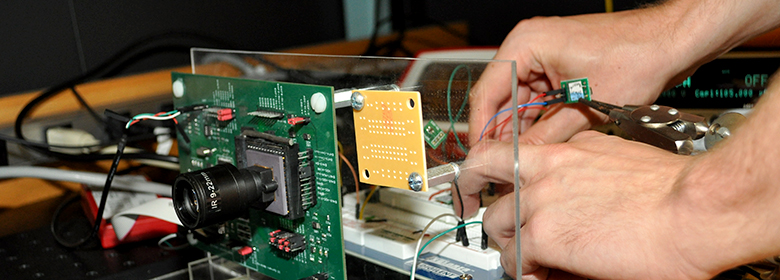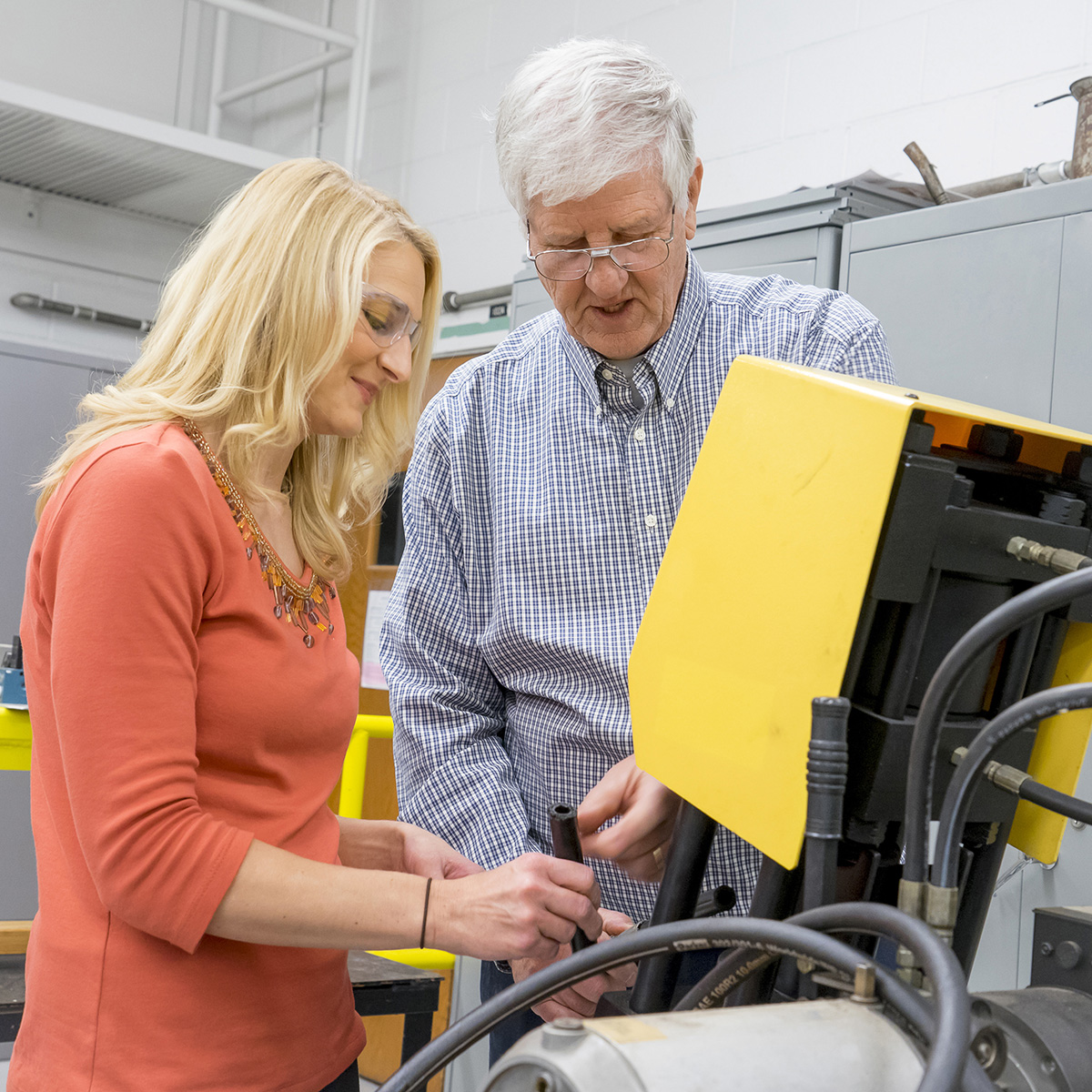
This is the first of a series of articles describing the college's sociotechnical research impact areas.
Purdue Polytechnic faculty with expertise in advanced materials, data visualization and analytics, design, health applications, manufacturing and processes, robotics and mechatronics, systems and networks, and sensors are engaged in research which has been titled “Realizing the Digital Enterprise,” one of the college’s five new research impact areas.
“Humanity increasingly relies on digital technology and data analytics,” said Tom Hacker, professor of computer and information technology. “This reliance serves as an opportunity to use computing to increase efficiency and intelligence in activities which were traditionally physical.”
Research projects focused on “Realizing the Digital Enterprise” could use automation, process control, sensors, data analytics and other technologies and processes to increase efficiency in infrastructure management, Hacker said. Researchers will look for opportunities to impact manufacturing, food services, logistics, energy, transportation, entertainment and other fields.

Current projects
Recent and current projects have focused on reactive sensors, self-powered cameras and smart buildings.
 By characterizing and enhancing the material properties of dielectric electroactive polymers, Brittany Newell, assistant professor of engineering technology, develops sensors that can send information and react to specific conditions. These sensors can be used to notify technicians and postpone failure in industrial and medical applications.
By characterizing and enhancing the material properties of dielectric electroactive polymers, Brittany Newell, assistant professor of engineering technology, develops sensors that can send information and react to specific conditions. These sensors can be used to notify technicians and postpone failure in industrial and medical applications.
Daniel Leon-Salas, associate professor of engineering technology, wants the light sensor in his camera to do more. His research focuses on using the light sensor as a type of solar cell that can harvest energy when it isn’t capturing images. With this advance, cameras could produce their own energy, making it easier to deploy these sensors with less infrastructure.
Buildings are ripe for developments to improve functionality and comfort by collecting and analyzing data. Kereshmeh Afsari, assistant professor in construction management technology and computer graphics technology, applies computational science to develop new solutions for the architecture, engineering, construction and operations industry.
“We will aim to bring more intelligence to our processes, systems and decisions through multidisciplinary projects that combine traditional, real-world processes with data analytics, cyber infrastructure, control and automation,” said Hacker.
Additional information:
- Realizing the Digital Enterprise researchers pair technology, social responsibility (2021-2022 update)
- Purdue Polytechnic research impact areas
- Realizing the Digital Enterprise
- Purdue ‘smart’ sensor predicts failures, improves safety
- Camera light sensor can act as solar cell

